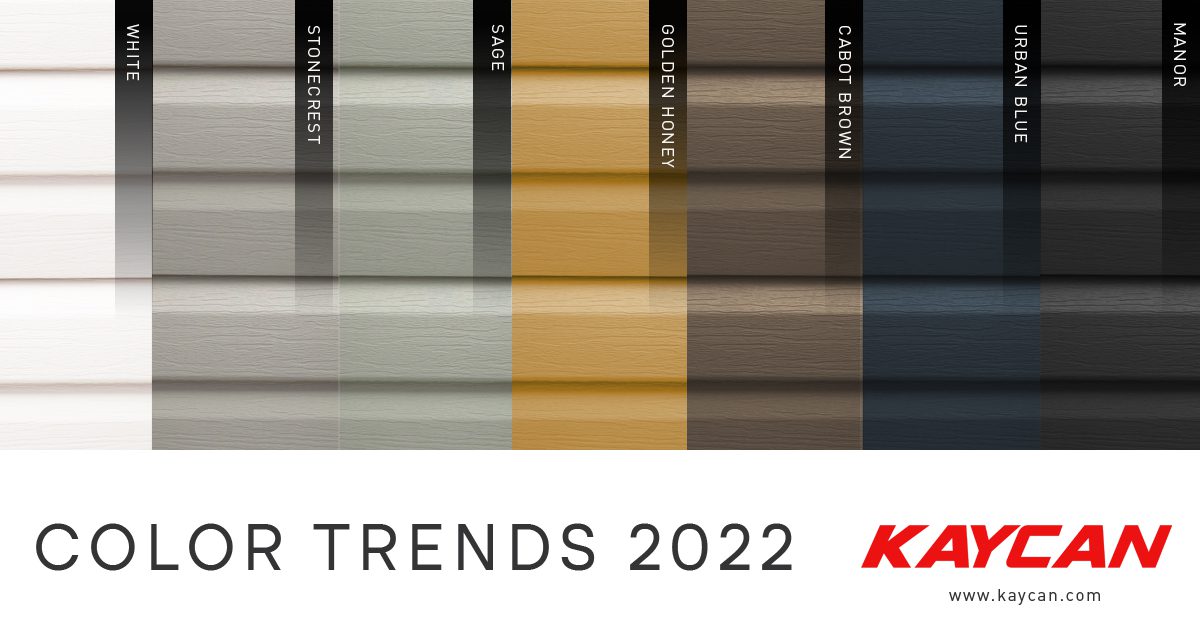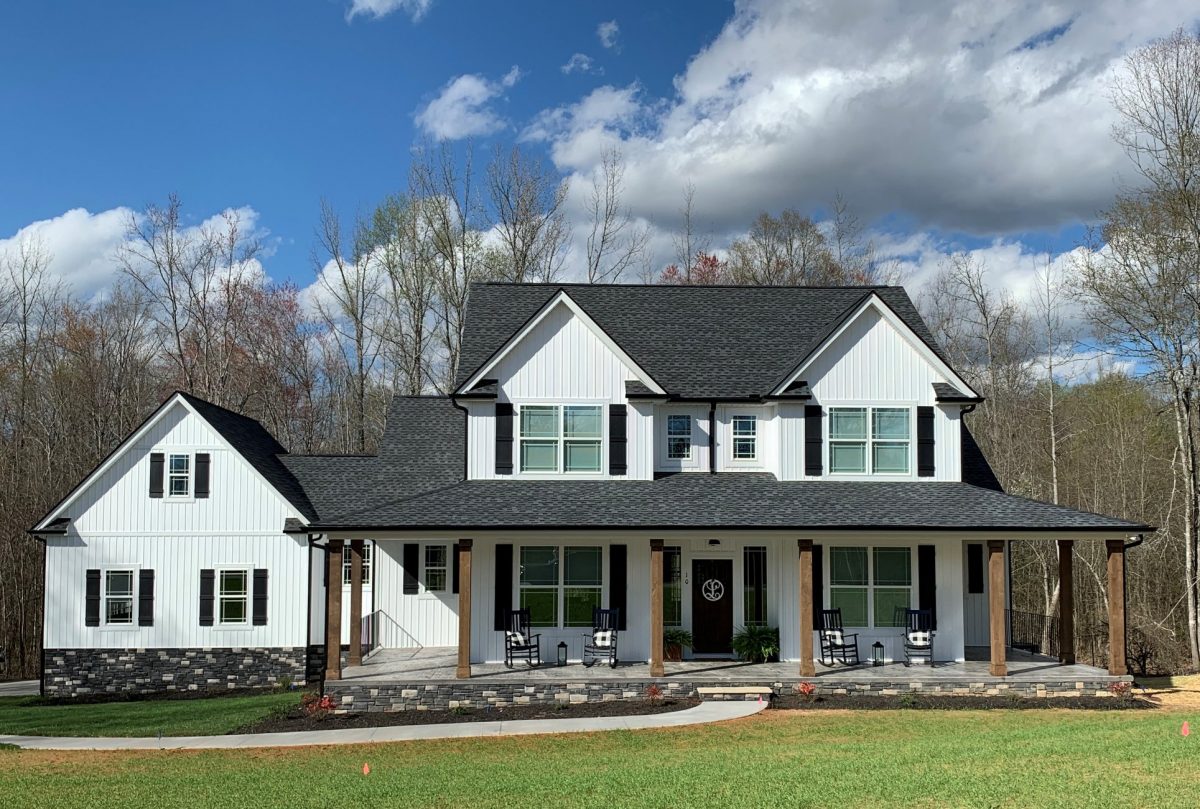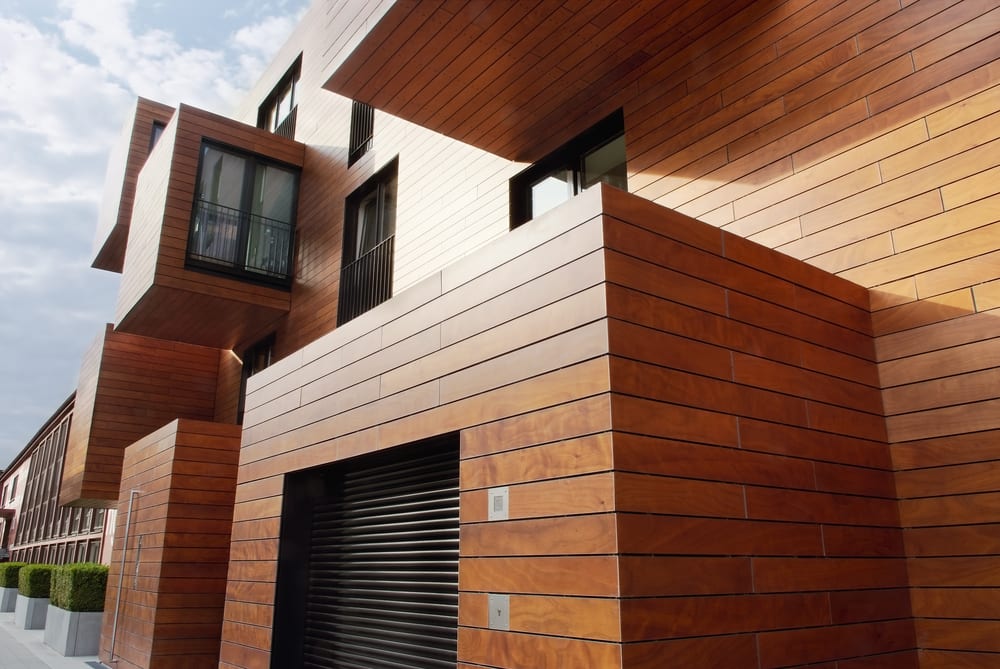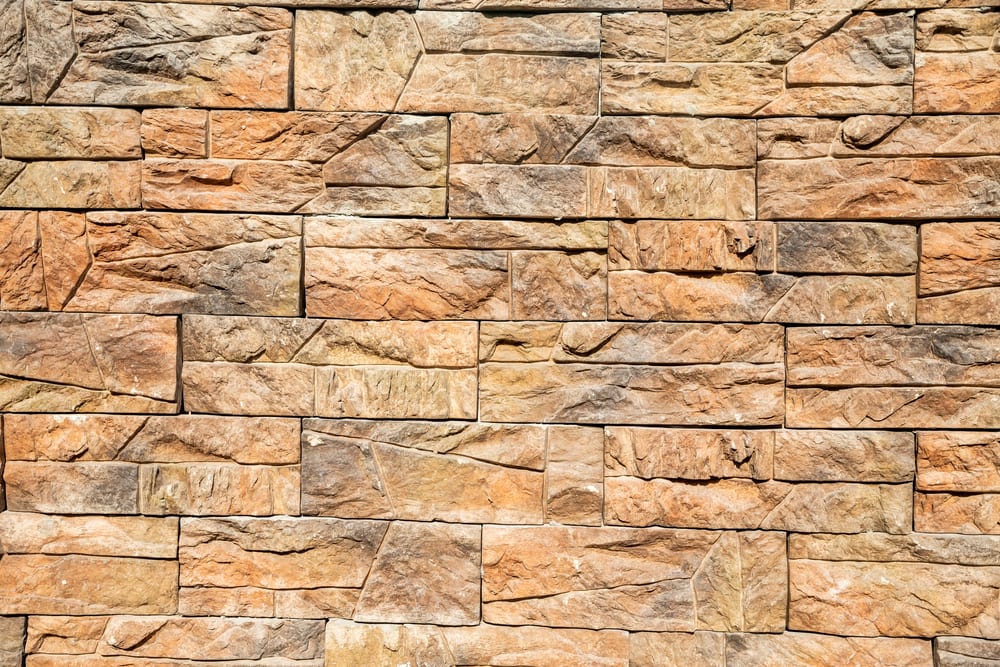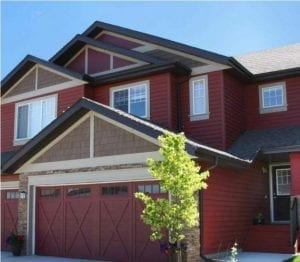
There are many things to contemplate when choosing a house covering, such as maintenance, cost, personal taste and the curb appeal of your home. Let’s look at a few of the choices available. Vinyl siding has been on the market since the late ’50s when an inventor discovered how to extrude polyvinyl chloride (PVC) into long lengths that resembled wood siding. But the early attempts to create a colour-stable, maintenance-free product was not particularly successful, because the siding was manufactured as a single layer or mono-extruded piece.
It wasn’t until the late ’70s. when double-layer or co-extruded PVC siding was perfected, that vinyl gained a reputation as a reliable, stable and inexpensive product. Today, it’s the most commonly used cladding in North America. Project estimator Graham Stewart of Windsor Plywood said his store sells more vinyl than any other siding.
“It’s one of the least-expensive products on the market, and it’s a DIYer’s dream material because it’s so easy to install,” he said.
Moreover, because installation can be done quickly, professionals can complete an average-size house in a few days, saving homeowners on labour costs associated with other cladding products. Vinyl siding retails for about 80 cents to $1.10 per square foot for light colours, and about $1.60 and up for dark or mixed colour combinations. These prices don’t include corners, J-trims, starter strips, sill trims and other pieces sold separately.
On the downside, darker colours such as reds, deep browns and blues will fade more quickly than lighter colours such as white, sage and clay. And though most types of vinyl come with a no-maintenance guarantee of about 25 years, the UV protectors will eventually break down, resulting in a faded, chalky finish. When this happens, the siding may have to be replaced or painted with water-based acrylic paint, available at Cloverdale Paint in Winnipeg for about $40 per gallon.
Chris Legault of Cloverdale recommends washing down the old vinyl with TSP or a mild soap solution, then rinsing well with water before applying the paint. “People should know that you can’t cover light-coloured siding with dark paint because solar-heat absorption will cause the vinyl to sag and warp,” he said. “However, you can put a light-coloured paint on a dark siding. Many consider wood siding, especially western red cedar, to be one of the most beautiful claddings available. Windsor Plywood sells a tight-knot cedar with a bevel profile that is very much in demand. Our eight-inch-wide cedar was so popular that it sold out this year, but we will be well-stocked with it again in the spring,” Stewart said, adding the siding is also available in six- and 10-inch widths by special order.”
Priced at about $2.50 per square foot, the eye-catching cedar is competitive with most other sidings on the market. Natural oils also make the wood rot-resistant—that’s why those West Coast totem poles have survived outdoors for centuries. Stewart said the downside to cedar is maintenance—if the homeowner wants to retain the natural colour of the wood by applying a clear or semi-transparent finish. For fans of oil-based protective coatings for wood, a few choices are still available from Western Paint in Winnipeg, according to a company spokeswoman. “We’ve got a stock of a linseed-based product called Para TimberCare which, assuming supplies last, will be available until 2014 when the government will ban the sale of oil paints and stains,” she said.
“A hybrid product, Flood CWF-UV, composed of oil and water, is an alternative to oil-only stains and has the advantage of cleaning up with soap and water” she added. Both products cost about $43 per gallon and will protect the natural look of wood siding for about two years before re-coating is required. There are also several composite sidings on the market that vary in price, durability and longevity. Hardie board, a fibre cement-based product, is an attractive siding that can be purchased either primed or pre-painted with a baked-on finish.
“This product has a lot of good things going for it,” said Chris Rioux, president of Xcalibur Roofing and Siding in Winnipeg, noting that his installation business has doubled every year since he began installing Hardie board. Hardie board is fire-resistant and is manufactured in numerous shapes and profiles that can resemble anything from lap-board siding to cedar shingle siding. The siding also comes with a 50-year limited transferable warranty if it’s installed to Hardie’s specifications, which include properly sealed joints, a Tyvek-covered substrate and 16- to 24-inch on-centre strapping if foam insulation is installed behind the siding.
Problems with the material are its weight and lack of flexibility, making it difficult to heft into place on a wall and easy to snap a board or panel in half in the process. Also, the product “usually requires repainting every 15 years with environmentally friendly water-based paint like Ecologic,” said Rioux. Though the cost is higher than some other sidings—anywhere from $7 to $10 per square foot installed—you won’t find a more weather-resilient and, at the same time, aesthetically pleasing cladding on the market, according to Rioux.
There are several engineered sidings on the market composed of wood fibre or strands, exterior-grade resins and zinc borate to discourage insects and rot. Kaycan Nature-Tech KWP is available installed from Chateau Roofing and Siding in Winnipeg. President Gerry Laurin said in his opinion, Kaycan’s KWP will last as long as Hardie board and comes in similar profiles and shapes. “The installed price for KWP is about $8 per square foot, depending on the size of the house and the number of corners and gables,” he said. Engineered siding is easier to handle than Hardie board and the pre-painted material does not have the blotching and other paint defects often associated with cement-board products, he said, adding KWP comes in about 16 colours. Windsor Plywood will order in many of the engineered sidings on the market. L.P. SmartSide is a quality brand that retails for $3 to $3.50 per square foot, depending on the amount ordered, Stewart said.
For homeowners with large budgets, there are real stone sidings available that can be installed for $25 to $30 per square foot, said Laurin. There are also faux-rock products made of pre-painted, high-density moulded foam that come in 18-inch by 36-inch panels that are considerably cheaper and easier to install than their real counterparts, according to Stewart.


